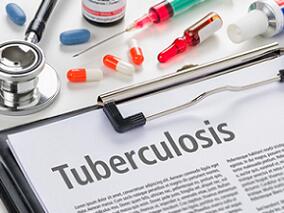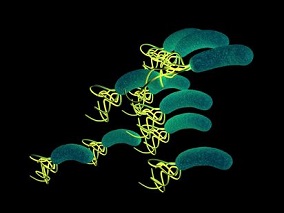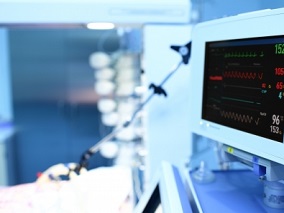甲流疫苗可增加格林-巴利综合征风险
《美国医学会杂志》(JAMA)7月11日发表的一项加拿大研究显示,老年人接种用于预防2009年H1N1甲型流感大流行的疫苗,可轻微增加发生Guillain-Barré综合征(GBS)的风险(JAMA 2012;308:175-81)。
2009年秋季,加拿大魁北克省开展了大规模免疫计划以控制H1N1流感大流行。卫生部首席医务官要求同时进行一项基于人群的GBS流行病学研究。该免疫计划覆盖魁北克6月龄以上的所有780万居民,疫苗接种工作仅由公共卫生服务部门完成。几乎所有接种者(96%)接种了H1N1甲型流感灭活单价ASO3佐剂疫苗(Arepanrix,葛兰素史克)。
除了要求报告GBS病例之外,2009年10月~2010年4月,每个月还与魁北克省所有神经科医生联系2次,要求他们报告其遇到的GBS疑似和确诊病例。魁北克市拉瓦尔大学社会与预防医学系的Philippe De Wals博士及其同事分析了这些病例记录及研究期间(2009年10月~2010年3月)该省所有急诊医院收治的所有GBS病例的记录。
该分析共纳入83例GBS病例,发生率为2.3例/100,000人,高于其他研究报告的1.1~1.8例/100,000人。在免疫计划开始后的12周内,共发生56例GBS聚集病例(占总病例数的67%)。相比之下,在这一时期内,在未接种的人群中未观察到GBS聚集病例。采用两种分析方法评价与该疫苗相关的风险,均发现在接种后4周内风险增加。然而,风险增加的情况仅见于50岁以上的患者。归因于接种的GBS病例数量约为2例/1百万剂。
世界其他地区的同类研究观察到不一致的结果。美国疾病预防控制中心的新兴感染计划发现,2009 H1N1甲型流感非佐剂疫苗和GBS之间无显著关系,取决于参照期的定义,归因风险为1.5~2.8例/1百万剂。这些结果与魁北克省的结果非常相似。而在英国,接种H1N1疫苗与GBS之间无显著关联。另一项在5个欧洲国家开展的研究缺乏足够效能,无法判断H1N1疫苗与GBS风险有无关联。
这项魁北克研究获魁北克省卫生与社会服务部及加拿大公共卫生署-加拿大卫生研究所流感研究网络资助。De Wals博士声明与葛兰素史克等疫苗生产商存在联系。
爱思唯尔 版权所有
By: MARY ANN MOON, Internal Medicine News Digital Network
The vaccine used to counter 2009’s pandemic influenza A(H1N1) strain may have increased slightly the risk of Guillain-Barré syndrome in vaccinated older adults, according to a Canadian study. Results were published in the July 11 issue of JAMA.
The study’s investigators stressed that the benefits of immunization likely outweigh the elevated risk.
Exposure to the ASO3 adjuvant influenza A(H1N1) vaccine was associated with a small but significant increase in the risk of developing Guillain-Barré syndrome (GBS) within 8 weeks, with an excess of approximately two cases of the disorder per 1 million doses of vaccine, said Philippe De Wals, Ph.D., of the department of social and preventive medicine, Laval University, Quebec City, and his associates (JAMA 2012;308:175-81).
The province of Quebec launched a mass immunization campaign in the fall of 2009 to control a pandemic of the H1N1 flu. The chief medical officer of health ordered that a population-based epidemiologic study of GBS be conducted at the same time. GBS had recently been added to the list of reportable diseases there.
The immunization program targeted all 7.8 million residents of Quebec aged 6 months and older, and the vaccine was administered by the public health service only. Almost all recipients (96%) were given the inactivated monovalent ASO3 influenza A(H1N1) vaccine (Arepanrix, GlaxoSmithKline).
In addition to the mandatory reporting of GBS cases, all neurologists in the province were contacted twice a month from October of that year until the following April and asked to report both suspected and confirmed cases of GBS they had treated. Dr. De Wals and his colleagues reviewed the records of these cases, as well as the records of all GBS cases treated at all the province’s acute care hospitals during the study period, from October through March.
In all, 83 cases of GBS were included in the analysis, representing a rate of 2.3 cases per 100,000 people. That is higher than the rates of 1.1-1.8 per 100,000 that have been reported in other studies, the researchers noted.
There was a conspicuous cluster of 56 cases of GBS (67% of the total number of cases) during the 12-week period just after the immunization campaign began. In contrast, no cluster of GBS cases was seen among unvaccinated people during that period.
Two statistical methods were used to assess the risk associated with the vaccine, and both found an elevated risk during the 4 weeks following vaccination.
However, the excess risk was seen only in patients aged 50 years or older.
"The number of cases attributable to vaccination was approximately 2 per 1 million doses," Dr. De Wals and his associates said.
Similar studies in other areas of the world have produced inconsistent results.
In the United States, the Centers for Disease Control and Prevention’s Emerging Infections Program found a significant association between the nonadjuvant 2009 influenza A(H1N1) vaccine and GBS, with attributable risks of 1.5 and 2.8 per million doses, depending on the definition of the reference period. Those findings are very similar to the results in Quebec.
However, in the United Kingdom, no significant association was found between the H1N1 vaccines administered there and GBS. And another study in five European countries lacked the power to detect an association of a few cases per million doses, the researchers said.
The Quebec study was funded by Ministère de la Santé et des Services Sociaux du Quebec and the Public Health Agency of Canada–Canadian Institutes for Health Research influenza research network. Dr. De Wals reported ties to vaccine manufacturers, including GlaxoSmithKline, Novartis, Sanofi-Pasteur, Merck, and Pfizer.
原文链接:http://www.elseviermed.cn/news/detail/A_flow_vaccine_can_increase_the_guillainbarre_syndrome_risk
- 评价此内容
- 我要打分
近期推荐
热门关键词
合作伙伴
Copyright g-medon.com All Rights Reserved 环球医学资讯 未经授权请勿转载!
网络实名:环球医学:京ICP备08004413号-2
关于我们|
我们的服务|版权及责任声明|联系我们
互联网药品信息服务资格证书(京)-经营性-2017-0027
互联网医疗保健信息服务复核同意书 京卫计网审[2015]第0344号




 会员登录
会员登录

